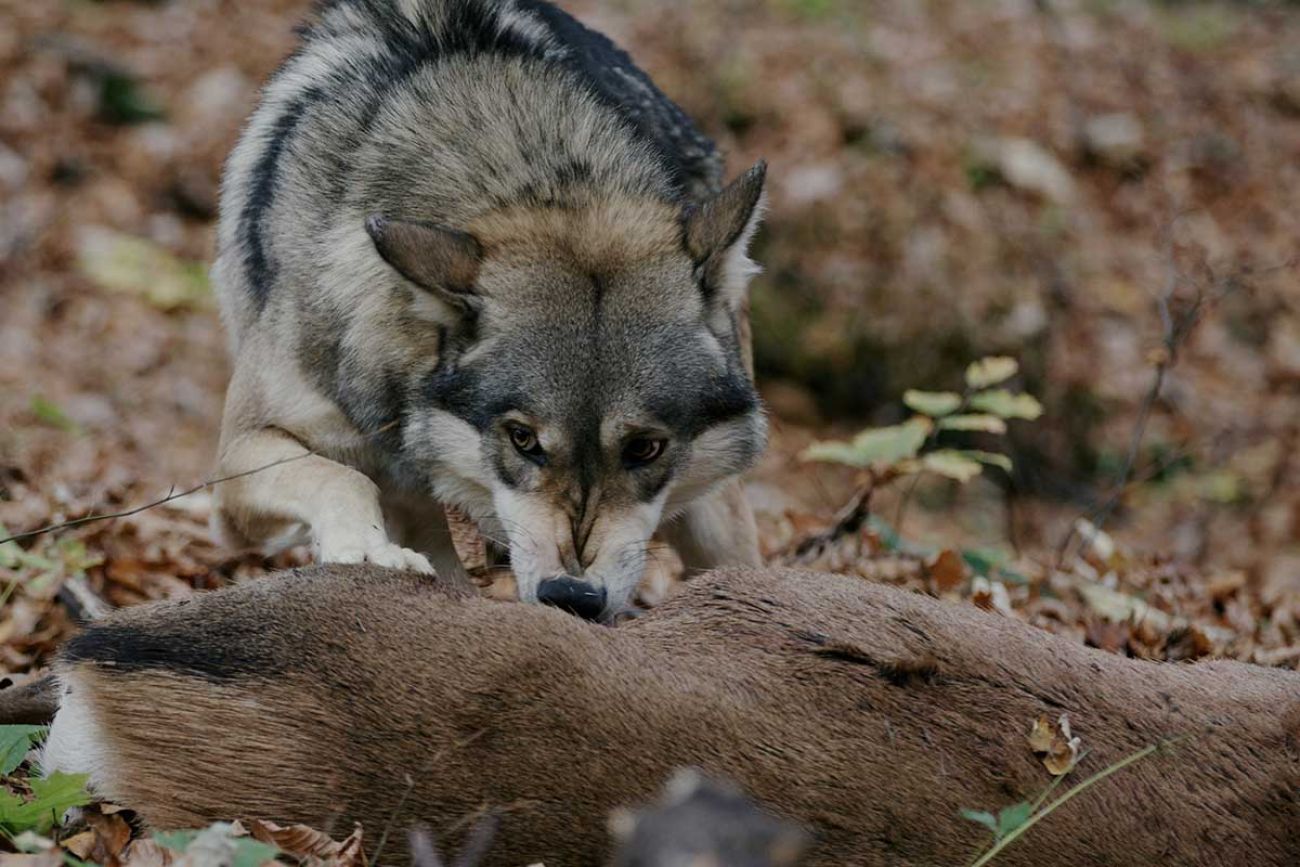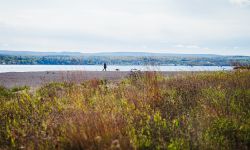Michigan hunters say wolves lowering deer numbers in U.P. Experts say no.

Gary Gorniak is convinced the Upper Peninsula’s gray wolves are to blame for his recent disappointing deer-hunting seasons.
The U.P. used to be teeming with deer, said Gorniak, president of the Straits Area Sportsmen’s Club and vice president of the Upper Peninsula Sportsmen's Alliance. But these days, he can go weeks in a blind with no action.
“It's actually boring,” he said, and has transformed a region that used to be a hunting destination.
Related:
- Wolf wars: As Michigan packs grow, a battle brews over killing the predators
- Michigan Senate passes bill to create a Yoopers-only wolf council
- Lawsuit: Michigan wolf advisory group stacked with hunting advocates
- Gray wolves, now off endangered list, may be targeted by Michigan farmers
- Should Michigan hunt wolves, cranes, moose? Republican lawmakers think so.
The solution, in his eyes? Kill about half of Michigan’s roughly 700 wolves so U.P. deer herds can recover.
It's a common refrain from hunting advocates who want the Michigan Natural Resources Commission to authorize a wolf hunt now that the predators have lost federal Endangered Species Act protections, leaving state wildlife managers in charge of management.
Just one problem: State biologists and outside experts say wolves aren’t driving the low deer numbers.
“There's no science to back that up,” said Brian Roell, a wildlife biologist with the Michigan Department of Natural resources. “It just isn't occurring.”
Instead, weather, habitat availability, hunting and other factors have greater influence over deer population trends, experts told Bridge Michigan.
Staff biologists with the DNR are finalizing a report on the factors limiting Upper Peninsula deer abundance, Roell said. And while wolves are a “piece of the pie,” they are “not even close” to being a major factor.
Coyotes, he said, kill more deer than wolves do because there are more of them. And winter weather has a far greater impact on deer abundance than any predator.
A decade-long monitoring project by outside researchers drew a similar conclusion.
Wolves “could potentially decrease population growth,” said Todd Kautz, a postdoctoral researcher with the State University of New York, who studied the relationship between wolf predation and deer survival in the western U.P. “But that's not a certainty.”
Wolves up, deer down
Gorniak’s fears are drawn from a notable trendline: While wolf numbers were rising in the U.P., area hunters reported having a harder time bagging deer.
The Michigan DNR doesn’t routinely track the U.P. deer population, but hunting groups complain of declining numbers.
Respondents to an annual survey of U.P. deer camp members reported seeing fewer deer per day last hunting season — an average of 2.6, down from 3 in 2019 — along with lower buck harvests and smaller overall deer herds. It was the second straight year of reported declines.
But experts say a number of other factors were affecting U.P. deer populations during the same time that wolves were repopulating the state. Forestry and land use practices changed, replacing the open fields and forest edges where deer thrive with denser tree cover. And a spate of harsh winters, such as the “polar vortexes” of 2014 and 2019, made it harder for deer to survive to breeding season.
There’s no question that wolves, an apex predator, eat lots of deer. The herbivores are the most common food source for mainland U.P. wolves, and Roell estimated an adult wolf eats the equivalent of between 25 and 40 deer every year.
But wolves target the weak, and many of the animals they eat may have died anyway, experts say.
From 2009 through 2019, scientists with the State University of New York study used radio collars and trail cameras to monitor deer throughout the western U.P. When the animals died, they checked the carcasses to find the culprit.
Nearly half of tracked fawns died within their first three months of life. Wolves caused just 7 percent of those deaths.
Among tracked does, whose survival is key to population trends because they produce offspring, wolves killed 8.6 percent of the population each year.
But most of those kills happened during late winter and early spring, when deer are in their poorest health. Bone marrow testing revealed that as many as half of the does were near-death from starvation by the time wolves attacked.
In other words, Kautz said, some percentage of those deer wouldn’t have survived the winter anyway.
“Is that 20 percent? 50 percent? 80 percent?” Kautz said. “That’s hard to pin down.”
Another signal: Overall deer populations in the study area declined sharply from 2012-2014, during a period of severe winters. Over the next three years, amid milder winters and more restrictions on hunters’ ability to target does, the population recovered.
The role of weather
So why is weather such a driving factor?
Deer in the U.P. snow belt are already at the northern limit of their range, said Rolf Peterson, a wildlife ecologist at Michigan Technological University and an expert in predator-prey relationships.
Surviving winter is a challenge even during normal years, Peterson. Throw in a particularly harsh year, and deer numbers are bound to take a hit.
“I do believe hunters that have had decades of hunting at their camp in the snow belt, and now they don't have as many deer,” he said. But the reasons are complex.
Particularly snowy winters can make it easier for wolves to target deer, Peterson said, by prompting malnourished deer to congregate in wintering complexes where wolves can more easily pick them off. Wolves are just one of many threats that can be compounded by winter malnourishment, he said.
“If you looked at a lot of deer dying in late March or April, you will also see that their noses and throats are full of botfly larvae,” he said. “That doesn't look too pretty, either.”
Gorniak posed another theory: Wolves may not be directly killing all those deer, but the work of avoiding wolf attacks could force deer to expend precious winter energy, starving large numbers that otherwise might have survived the winter.
Peterson called that “a nice story,” but a theory lacking in evidence.
Michigan Environment Watch
Michigan Environment Watch examines how public policy, industry, and other factors interact with the state’s trove of natural resources.
- See full coverage
- Subscribe
- Share tips and questions with Bridge environment reporter Kelly House
Michigan Environment Watch is made possible by generous financial support from:
Our generous Environment Watch underwriters encourage Bridge Michigan readers to also support civic journalism by becoming Bridge members. Please consider joining today.
See what new members are saying about why they donated to Bridge Michigan:
- “In order for this information to be accurate and unbiased it must be underwritten by its readers, not by special interests.” - Larry S.
- “Not many other media sources report on the topics Bridge does.” - Susan B.
- “Your journalism is outstanding and rare these days.” - Mark S.
If you want to ensure the future of nonpartisan, nonprofit Michigan journalism, please become a member today. You, too, will be asked why you donated and maybe we'll feature your quote next time!






